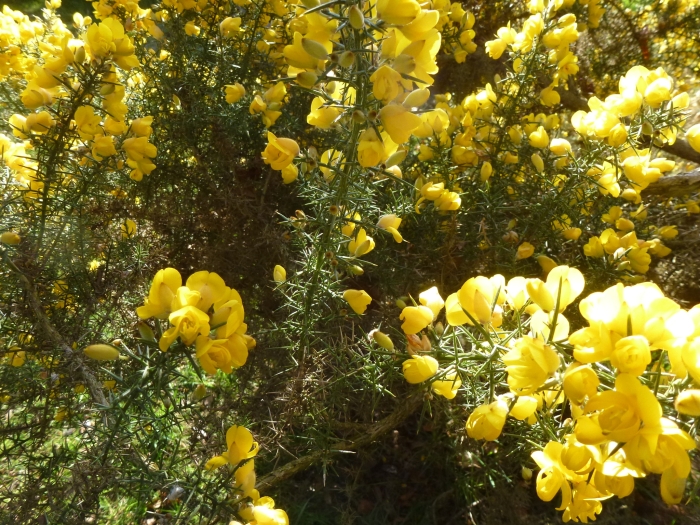Common Gorse
(Ulex europaeus)
Common Gorse (Ulex europaeus)
/
/

Susan Marley
CC BY 4.0
Image By:
Susan Marley
Recorded By:
Copyright:
CC BY 4.0
Copyright Notice:
Photo by: Susan Marley | License Type: CC BY 4.0 | License URL: http://creativecommons.org/licenses/by/4.0/ | Rights Holder: Susan Marley | Publisher: iNaturalist | Date Created: 2020-04-13T08:46:19-07:00 |






















Estimated Native Range
Summary
Ulex europaeus, commonly known as common gorse, is an evergreen shrub native to Western Europe, particularly in open, sandy areas of heathlands, coastal cliffs, and grasslands. It typically grows to a height of 7-10 feet tall. The plant’s young stems and leaves are modified into sharp spines, which deter grazing by herbivores. Its bright yellow, pea-like flowers are coconut-scented and bloom mainly in spring, though some flowers can be found throughout the year, adding long-lasting color to the landscape. The flowers are highly attractive to bees and other pollinators.
Common gorse is valued for its hardiness and ability to thrive in poor soils, making it suitable for challenging sites where other plants might struggle. It is often used for hedging and as groundcover in gardens and public spaces. However, due to its dense growth and spiny foliage, it can be difficult to prune and manage. In cultivation, Ulex europaeus prefers full sun and well-drained soils. It is drought-tolerant once established and requires little maintenance. Despite its ornamental and practical uses, Ulex europaeus is highly invasive outside its native range, particularly in New Zealand, the western United States, and Sri Lanka, where it forms dense thickets that outcompete native vegetation and alter fire regimes. Gardeners should be cautious and consult local regulations before planting to prevent ecological damage.CC BY-SA 4.0
Common gorse is valued for its hardiness and ability to thrive in poor soils, making it suitable for challenging sites where other plants might struggle. It is often used for hedging and as groundcover in gardens and public spaces. However, due to its dense growth and spiny foliage, it can be difficult to prune and manage. In cultivation, Ulex europaeus prefers full sun and well-drained soils. It is drought-tolerant once established and requires little maintenance. Despite its ornamental and practical uses, Ulex europaeus is highly invasive outside its native range, particularly in New Zealand, the western United States, and Sri Lanka, where it forms dense thickets that outcompete native vegetation and alter fire regimes. Gardeners should be cautious and consult local regulations before planting to prevent ecological damage.CC BY-SA 4.0
Plant Description
- Plant Type: Shrub
- Height: 4-10 feet
- Width: 5-10 feet
- Growth Rate: Rapid
- Flower Color: Yellow
- Flowering Season: Spring, Summer, Winter
- Leaf Retention: Evergreen
Growth Requirements
- Sun: Full Sun
- Water: Low
- Drainage: Medium, Fast
Common Uses
Drought Tolerant, Showy Flowers
Natural Habitat
Native to open, sandy areas of heathlands, coastal cliffs, and grasslands in Western Europe
Other Names
Common Names: Gorse, European Gorse, Gaspeldoorn, Ginestra Spinosa
Scientific Names: , Ulex europaeus, Genista europaea, Ulex talenceanus,
GBIF Accepted Name: